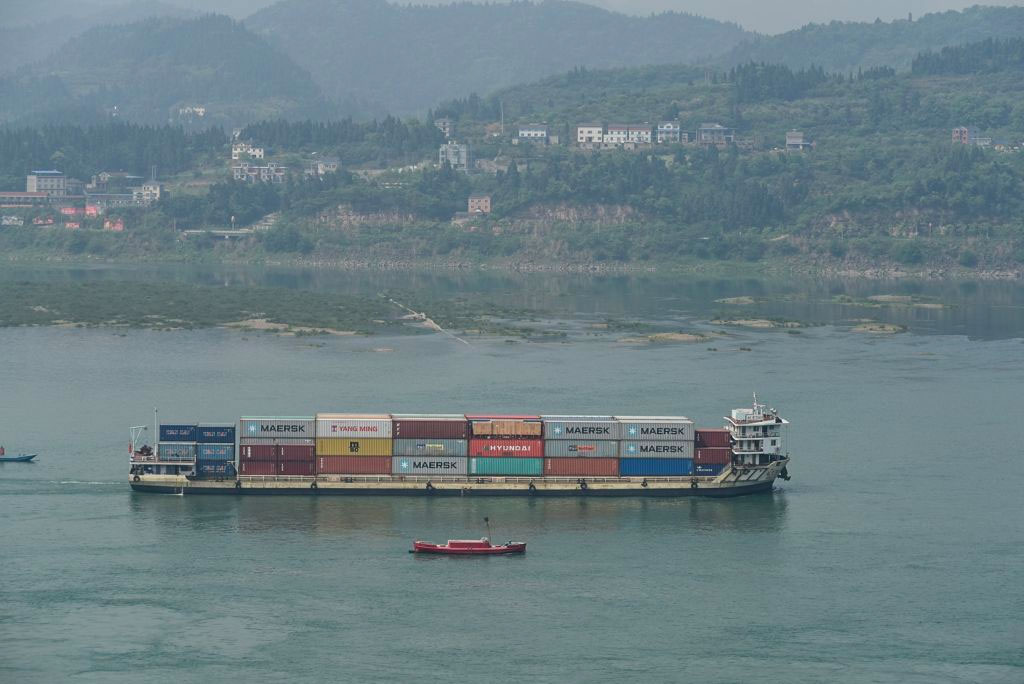Op-Ed
Nature Protection Key to the PRC Battling Yangtze’s Deadly Floods
Qingfeng Zhang 29 Jul 2020
This year, the monsoon has started earlier in the People’s Republic of China (PRC), resulting in severe floods that have already affected some 38 million people and caused about $11.8 billion direct economic losses, according to the Ministry of Emergency Management of the government.
The Yangtze River basin in the southern part of the PRC has been hard hit by heavy flooding since early June this year. Hundreds of small to medium size rivers as well as major lakes including the Dongting, Poyang, and Tai in the basin have risen to their highest water levels in history. This flooding is certainly not the first of its kind; the Yangtze River basin experiences large floods about every 10 years, each causing suffering and extreme damage to the economy and environment.
The aggravating human and ecological factors in these worsening floods are mainly climate change, and ecological degradation. In the southern PRC the flood season has shifted earlier and lasts longer, concentrated in the middle part of the Yangtze River basin. This can further be attributed to El Niños that come along every 10 years. Ecological changes such as the loss of floodplain and retention areas, accelerating urbanization, and river sedimentation have had a serious impact on flood frequency and magnitude in the basin.
So the most immediate question is: what can be done to reduce the likelihood of loss while maximizing the benefits of economic development? The solutions are a complex tangle of financial, institutional, social, procedural, and technical threads. Natural hazards, such as floods, cannot be prevented, but we can mitigate the damage they cause with preventive and adaptive measures, which can be summarized under five actions.
First, rehabilitating aging flood control measures such as dikes and reservoirs is paramount. More than 80,000 reservoirs in the PRC (of which about 50,000 are in the Yangtze River basin) do not store water up to the design level as they are subject to leakage, instability of dams, and inadequate spillway capacity for emergency flood discharge. Rehabilitation of such reservoirs is a lower cost way to strengthen flood mitigation and with less adverse impact on the environment and people than building new reservoirs.
Rural areas also tend to lack flood risk mitigation standards in the PRC compared to urban areas. There is a need for promote integration where rural area and river corridors can effectively serve as a flood retention zone while urban areas can adopt flood infrastructure so that it will not increase the urban runoff that causes flooding in rural areas. Nature-based approaches, such as ecological embankments, protecting wetlands and restoring ecosystem to mitigate flood damage will be essential.
Second, ecological conservation will play a crucial role in mitigating floods. A large number of wetlands in the PRC that formerly served as flood retention areas have been destroyed at the annual rate of about 9% since the 1950s. About 1.3 million hectares of water surface areas and buffer zones mainly in Dongting, the Poyang and the Tai lakes have also been reclaimed for agriculture or urban development and the remaining volume of lakes is also reduced significantly due to sedimentation. The government has started restoring these lost wetlands, but it requires time and significant amount of finance and commitment.
The Yangtze River in downstream areas mainly around Jingzhou and Wuhan cities is highly sedimented. Where the riverbeds are higher than the ground level results in frequent dike breaches and flooding. The river sedimentation problem can be solved by regulating the sediment discharge through artificial and natural means including soil and water conservation.
Third, integrated flood risk management responsibilities are still divided among several agencies despite recent institutional reform in the PRC. Coordination mechanisms among agencies are yet to be established to promote integrated flood risk management in the river basin. The role of river basin authorities needs to be enhanced to fully enable their coordination role on a basin scale. Integrated flood risk management recognizing the nexus among water, waste, ecosystem and other sectors in a river basin should be promoted to bring tangible outcomes on the ground.
Fourth, social and gender inequalities need to be addressed. Poverty is both a cause and a consequence of vulnerability, especially in rural areas, where households rely primarily on agriculture for their livelihoods. Many emerging famers, who built up assets on newly consolidated land for agriculture, are dragged into severe poverty by the floods.
In areas with inadequate access to sanitation, floods can lead to toilet overflow, groundwater contamination, soil pollution and general environmental degradation. Increasing access to safely managed sanitation and improving public health conditions is therefore paramount to protect both human and environmental health. This is also particularly relevant to prevent the spread of COVID-19 in highly exposed communities. A participatory and community-based approach to flood risk management should be in place to reduce vulnerability and increase resiliency of local communities. The flood early warning system should also be well embedded into the community based system.
Fifth, financial mechanisms are instrumental in mitigating the impacts of monetary losses. The potential of financial products, including insurance and resilience bonds, contingent liability facilities, risk pooling and other emerging mechanisms for adapting planning and ecosystem resilience, is still largely untapped. The PRC government, international financial institutions, the private sector, commercial banks, research institute and civil society organizations have to work closely together towards tapping this potential.
Taking all these elements into account, the Asian Development Bank has invested about $2 billion to support the Yangtze River Basin Economic Belt (YREB) program to address environmental, social and economic issues with a holistic mindset. This is a step beyond traditional watershed management towards a more holistic protection of public goods, such as water resources, ecosystems, pollution control, biodiversity conservation and climate change.
To build back better, protect and restore the ecosystem services on which China’s economic growth and jobs depend, a nature-centered approach will be pivotal. As a positive step, a national green development fund with total registered capital of $12.7 billion, focusing on key areas of green development along the Yangtze River Economic Belt, was established in Shanghai on July 15.
The funds raised will be directed to investment fields such as pollution control, ecological restoration, afforestation of national land, conservation of energy and resources, green transportation and clean energy along the Yangtze river.
Together with the promulgation of a Yangtze river protection law and the establishment of a green development fund, all these actions to manage and value natural ecosystems can address societal challenges and extreme events effectively and adaptively, while providing economic dividends, human well-being and biodiversity benefits.
Author

Qingfeng Zhang
Chief, Rural Development and Food Security (Agriculture) Thematic Group, ADB
This Op-Ed is reproduced from Asian Development Bank.


